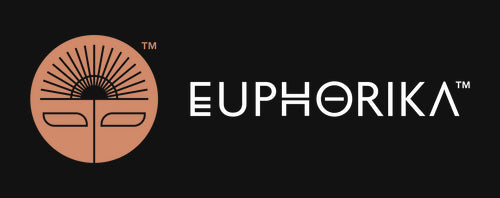
Biohacking a 9-5: Finding Ways To Hack Your Health And Optimise Performance During A Busy Work Week
Introduction
Chronic fatigue seems to have become so common an issue in our society, that it’s treated more as an unfortunate but inevitable condition rather than something we can truly surpass. In particular, fatigue and work weeks seem to go hand-in-hand, with long commutes, stressful conditions and hours spent in front of the laptop leaving most of us capable of doing little but collapsing on the sofa once we arrive home.
Nevertheless, the question “Why am I so tired all the time?” is one of the most commonly searched health-related queries on Google. You’d think this means we’d have an easy answer by now, but unfortunately most of the advice you receive falls into one of two categories:
- Overly straightforward and basic advice, such as ‘get more sleep’ and ‘eat well’.
- Overly complex advice, along the lines of elaborate fad diets, dubiously effective high-tech treatments and expensive supplements.
But what if I told you there was a middle ground— a cost-free, easy and fun way to boost your energy during everyday life that carries with it a host of other benefits? And the best part is that I’m not even going to drag out the answer to retain reader attention.
The key to unlocking your energy is movement.
The Science Behind Your Slump
Before we get to the fun stuff, we need to cover a little bit of science and semantics. First off, you’re not exhausted. Exhausted is what happens when you’ve used up your body’s resources for the day, usually by performing intense or prolonged physical activity.
But you’ve been doing the exact opposite— sitting in the car, slouching at your desk, sprawling on your sofa. You’ve used almost none of your body’s resources, but you’re still feeling tired; you’re fatigued or lethargic.
This tiredness is actually a result of your body being incredibly efficient and adaptive. Its read that you’ve had a sedentary day, and it’s keeping energy production low to accommodate this. Your mitochondria (energy producing cells) will literally become less active. This isn’t an issue short-term, but as the weeks, months or even years of sedentary days build up, your body begins to adopt this ‘battery-saver’ mode as a default.
The solution to overcoming this unwanted adaptation is to begin slowly training your body to move back in the other direction. You need to show your system that you need that extra energy to pursue a more active and energetic life.
The Movement Solution
Simply put, there is no better way to signal to your body that you need energy than to move and perform exercise. Not only will this kickstart mitochondria production, but it’ll also increase blood flow and oxygen levels in your brain and muscles. On top of this, exercise will initiate the release of wakefulness hormones and neurotransmitters like dopamine, adrenaline and cortisol.
To many people suffering from chronic lethargy, an intense workout routine seems like the last thing they can manage. The great thing is that it takes very little to begin activating these results: gentle stretches and mobility work, walks, light bodyweight exercises are all sufficient in triggering a positive change.
One of the most effective ways to integrate these movements into your day is sporadically. Try deep-squatting whilst your coffee boils on the stove, dangling from the tree-branch outside your doorway or skip the elevator to your office and use the stairs instead. My personal favourite is celebrating the end of a work of a workday with a spirited boogie. Start teaching your body that physical activity is a common part of your everyday routine and that you need the appropriate levels of energy for this.
All of these movements will have an immediate impact on your energy levels, but they also lead to cumulative long-term benefits. As you grow fitter, with increased cardiovascular health and musculature you become more susceptible to the energy-boosting effects of movement. You are also able to perform more strenuous movements, like weightlifting and skipping rope, which provide your body more potent biochemical boosts.
Other Ways To Boost Yourself
Make the most of the movement strategy by supplementing it with a few helpful hacks:
- Attention Restoration Theory: This theory posits that time spent in, or looking at nature reduces mental fatigue. Take your movement outdoors and go for a sunset run on Noordhoek beach, hike up Lion’s Head or simply go chill in Newlands Forest.
- Reduce alcohol intake: Regular alcohol can quickly sap your motivation and energy. Why not try replacing it with a delicious non-alcoholic alternative every now and then? Euphorika’s kombucha packs a mood-boosting kick but comes with none of alcohol’s negative side effects.
- Reduce stress: Stress isn’t just mental— it commands a massive drain on your body’s resources and cuts back on available energy. Reducing stress is one of the best things you can do for your energy levels, health and mind.
Conclusion
Hacking your health during a busy work week doesn’t have to be complicated or expensive. By embracing the power of movement and incorporating simple, fun activities into your daily routine, you can begin to undo the chronic lethargy that’s been evolved into us by our sedentary lifestyles. The great thing is that starting this process is easy, and as you steadily grow fitter, the energy-boosting benefits of exercise grow with you. Optimize these results by pairing them with other strategies, like spending time in nature, cutting back on alcohol or reducing stress.





